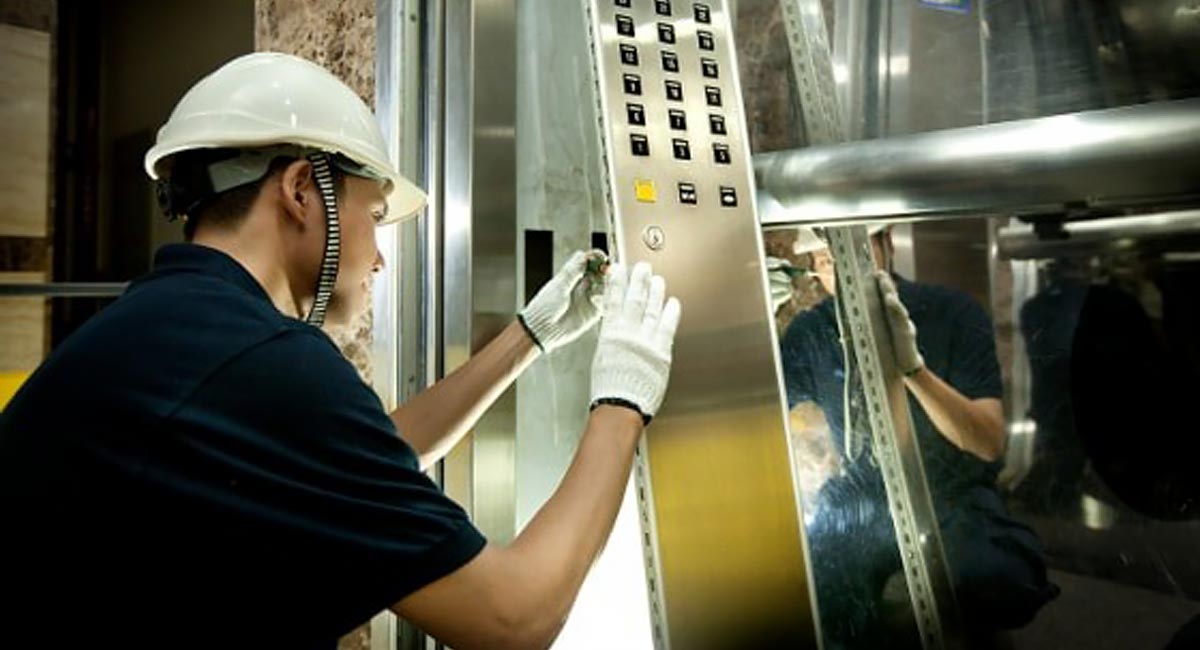Vital Elements to Consider for Elevator Upkeep
When it comes to the risk-free and effective operation of lifts, thinking about necessary maintenance aspects is critical. Elevators are elaborate systems that need careful attention to information to work accurately. From normal evaluation routines to sticking to appropriate lubrication strategies, each aspect plays a crucial role in making sure the lift's long life and safety and security. Forgeting these upkeep practices can lead to unanticipated downtime, security risks, and pricey repairs. It is necessary for developing managers and maintenance workers to stay ahead of these elements to support the elevator's performance requirements and compliance demands.
Regular Inspection Schedules

Performing routine examinations not just boosts the total efficiency of the lift but additionally plays a vital function in adhering to safety and security laws and industry standards. It makes certain that the elevator runs efficiently, minimizing the danger of unanticipated break downs that might hassle owners or concession safety and security. In addition, routine evaluations contribute to extending the life-span of the lift tools, inevitably lowering upkeep costs and downtime.
To improve the examination procedure, several building owners partner with qualified elevator maintenance firms that focus on carrying out thorough analyses and giving prompt upkeep solutions. By focusing on normal assessment timetables, stakeholders can promote the security, reliability, and effectiveness of their lift systems.
Proper Lubrication Methods
Efficient lubrication methods are important for keeping the ideal performance and long life of elevator elements. Correct lubrication techniques play a critical role in stopping wear and tear on moving components, lowering friction, and making certain smooth procedure of the elevator system. When it concerns lift maintenance, using the right lubricants in the appropriate amounts at the suggested intervals is key to avoiding expensive fixings and minimizing downtime.
To guarantee appropriate lubrication, lift technicians need to follow supplier guidelines relating to the type of lubricant to be utilized for particular parts such as bearings, equipments, and guide rails - lift repair companies near me. Over-lubrication can draw in dust and debris, bring about element malfunctions, while under-lubrication can create increased rubbing and early wear. Consistently scheduled lubrication maintenance need to be consisted of in the overall elevator maintenance strategy to keep the system running effectively and safely
Checking Tear and use
Lift upkeep employees must carry out routine evaluations to identify indications of wear on key parts such as ropes, sheaves, overview rails, and bearings. Additionally, keeping comprehensive upkeep documents can assist in tracking the wear patterns of lift components over time, permitting for anticipating maintenance preparation. By very closely keeping track of wear and tear, upkeep groups can deal with issues proactively prior to they intensify into pricey fixings or unforeseen downtime, making certain the effective and secure operation of the elevator system.

Security Conformity Checks
Carrying out comprehensive safety and security conformity checks is crucial in making certain the lift system fulfills all operational requirements and regulative standards. Safety and security conformity checks include a comprehensive evaluation of numerous parts such as emergency situation brakes, door sensing units, interlocks, and electrical systems to ensure they are operating appropriately. Routine evaluations by licensed experts help recognize prospective security risks before they rise right into significant problems, guaranteeing the safety and security of passengers and conformity with industry regulations. These checks also entail verifying that the elevator's capacity restrictions, speed, and emergency situation interaction systems remain in line with security requirements. In addition, adherence to safety and security conformity checks can avoid mishaps, reduce obligation risks for structure proprietors, and expand the life expectancy of the elevator system. By focusing on safety and security conformity checks as part of go now routine maintenance, building managers can copyright a efficient and risk-free vertical transport system for occupants.
Emergency Situation Action Preparation
In go to my site light of the crucial significance of security conformity checks in keeping elevator systems, a robust emergency action planning technique is critical to promptly and properly address unexpected cases. lift maintenance london. Emergency feedback planning for elevators involves positive actions to guarantee the safety and security of guests and maintenance workers in case of emergencies such as power outages, entrapments, or mechanical failures
Secret components of an effective emergency action strategy consist of establishing clear interaction procedures, providing regular training to staff on emergency situation procedures, maintaining current emergency get in touch with lists, and performing regular drills to exercise reaction activities. In addition, it is crucial to have actually marked workers in charge of coordinating emergency feedbacks and making sure that necessary devices, such as emergency situation lighting and interaction devices, are in functioning order.
Final Thought
To conclude, it is essential to focus on routine evaluation routines, appropriate lubrication strategies, keeping an eye on damage, security conformity checks, and emergency situation feedback preparation for elevator upkeep. By executing these important factors, structure owners can ensure the security and performance of their lifts, ultimately reducing the danger of crashes and malfunctions. Regular upkeep practices are vital for prolonging the life-span of elevators and ensuring the wellness of individuals that count on them for transportation.
Frequently arranged lubrication upkeep should be consisted of in the total elevator maintenance strategy to keep the system running effectively and safely.
Lift maintenance workers should conduct routine examinations to identify indications of wear on essential components such as ropes, sheaves, overview rails, and bearings. Additionally, keeping detailed upkeep records can aid in tracking the wear patterns of lift parts over time, allowing for predictive upkeep planning. By carefully keeping an eye on wear and tear, maintenance teams can deal with issues proactively before they intensify into expensive repairs or unexpected downtime, making sure the risk-free and efficient procedure of the elevator system.
